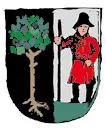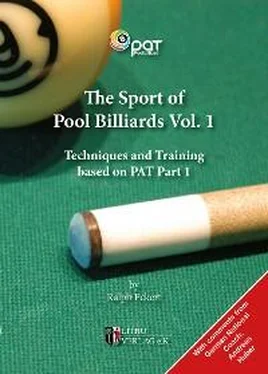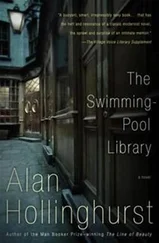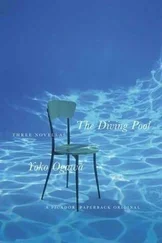The Sport of Pool Billiards I
Techniques and Training based on PAT Part 1
by
Ralph Eckert
2

table of contents
© Litho-Verlag e.K., Wolfhagen, Germany
www.litho-verlag.de
www.billiardbook.com
All rights reserved
Printed in Germany
1st edition 2015
ISBN print: 978-3-941484-96-2
ISBN ebook: 978-3-941484-97-9 (epub)
ISBN ebook: 978-3-941484-98-6 (pdf)

3

table of contents
Table of Content
Introduction ..............................................................5 5 Introduction Introduction Here‘s an idea of how a perfect 8-ball game could go: Start with a draw shot from the 1 on the 4, then a natural roll from the 4 on the 2, then another draw shot on the 2, which is frozen to the rail, to get into a good position for the 7. Use a follow stroke on the 7 with a little left spin and from there a little draw stun shot on the 3 with a bit of right spin to get into position for the 5. From there a stun shot on the 5 just above center, then a natural roll to the 6 via two cushions, giving it a little right spin and using about Speed 2.5. This puts us in a perfect position for the 8! Then it‘s just a stop shot to secure victory! What use is all this information to beginners? They‘ll never be able to put it into practice at the start. You‘ll have to play for a long, long time, maybe even years, before you can hope to play such shots with any ease. In this training program I want to show you how you can acquire the necessary skills
1. Before the First Shot ...........................................8 8 before the first shot Before the First Shot Posture and Overlearning In this chapter I will only outline a few basic principles of cor-rect posture! You should also look at the tips given in Chapter 2.2 „Straightness“ on one-handed play and your personal anatomically correct standing position! The exercises described there are the most important, but each aspect is gone into in more detail in the relevant chapter (for example, shot straightness). If you are a genuine beginner, then try to put this advice on posture and cue handling into practice. If you have any prob-lems, ask your club trainer to help you. If you have already been playing for some time, then just check your posture. Look at yourself in a mirror or maybe even film yourself. This way you can see what you are doing right and where there is room for improvement. If you‘re doing everything right, that‘s great. But what if you discover some little mistake that you have been making for years that maybe prevents you from making any more progress? Well, there are two possibilities. Either you stick with your mistake and try at least to stabilize your level of performance with the help of the exercises in this program, or you take the time to iron out the mistake that has crept into your game! In sports that require a high level of precision and skill (to which pool billiards belongs), this means some ten to fifteen thousand repetitions before the mistake has been cor-rected, depending on your age and the number of years you have been making the mistake! If you are a real beginner, then you‘ll have to get used to overlearning! Overlearning is the term used in sport to describe the notion of repeating a movement
1.1 Posture and Overlearning .........................................8 8 before the first shot Before the First Shot Posture and Overlearning In this chapter I will only outline a few basic principles of cor-rect posture! You should also look at the tips given in Chapter 2.2 „Straightness“ on one-handed play and your personal anatomically correct standing position! The exercises described there are the most important, but each aspect is gone into in more detail in the relevant chapter (for example, shot straightness). If you are a genuine beginner, then try to put this advice on posture and cue handling into practice. If you have any prob-lems, ask your club trainer to help you. If you have already been playing for some time, then just check your posture. Look at yourself in a mirror or maybe even film yourself. This way you can see what you are doing right and where there is room for improvement. If you‘re doing everything right, that‘s great. But what if you discover some little mistake that you have been making for years that maybe prevents you from making any more progress? Well, there are two possibilities. Either you stick with your mistake and try at least to stabilize your level of performance with the help of the exercises in this program, or you take the time to iron out the mistake that has crept into your game! In sports that require a high level of precision and skill (to which pool billiards belongs), this means some ten to fifteen thousand repetitions before the mistake has been cor-rected, depending on your age and the number of years you have been making the mistake! If you are a real beginner, then you‘ll have to get used to overlearning! Overlearning is the term used in sport to describe the notion of repeating a movement
1.2 Stance .....................................................................10 10 before the first shot Stance
1.3 Upper Body and Head ...........................................12 12 before the first shot Upper Body and Head Bend your head and upper body down over the cue, holding the cue as horizontally as possible. It is virtually impossible, and not even necessary, to hold the cue completely horizontally. Your head should be directly above the cue, i.e., looked at from above, the cue should move in a straight line directly below your chin and nose or between your eyes. Make sure you do not bend down too far so that your chin is almost touching the cue (a hand‘s breadth or four fingers is ideal), because in this case (depending on your size) you will not have enough room to move the cue correctly with your playing arm. As long as you have enough room to play, you can bend as far as you want over the cue. The older you get, the more difficult you will find it to bend down, in any case.
1.4 Cue Handling .........................................................13 13 Chapter 1 Andreas Huber, German national coach: As Ralph has already said, the player should rely on his own feeling when trying to find the right stance – especially when it comes to head and cue alignment. Nearly everyone has a dominant eye and the cue will generally be slightly off-center biased towards this eye so that the player can accurately recognize a straight shot when he has played one. Ralph will go into this in more detail later, as this is the second „little mistake with enormous consequences“, along with wrong weight distribution in the stance. A lot of top players improved their game enormously in the past just by correcting this „little mistake.“ Cue Handling With very few exceptions (e.g. the break), the bridge arm (front arm) should be stretched out almost to the full. If you bend it too much, or even rest your forearm on the table, there is a danger that you will be leaning forward too far with your whole body when you shoot. In this case the bent arm would act like a spring and could lead to more mistakes. I will describe the hand bridge through which we guide the cue in a later chapter. There are several points to be remembered when it comes to the shooting arm (back arm): In a good cue grip your hand should cradle the cue be-tween your thumb and four fingers, with the middle, ring and little finger slightly looser so that they give a little on the backswing but still remain on the cue, helping to guide it. If the cue grip is too tight there will be too much movement in the upper arm when you swing, making it virtually impossi-ble to cue in a straight line. The upper arm will automatically move slightly, but for a straight cue movement this should be kept to a minimum.
Читать дальше













